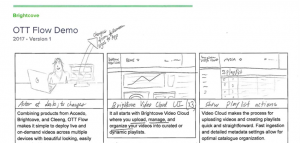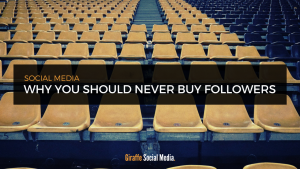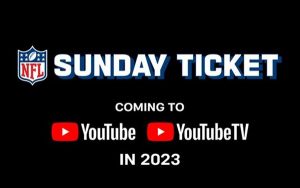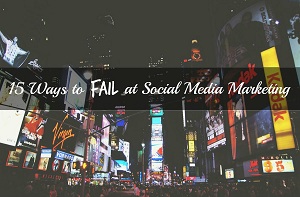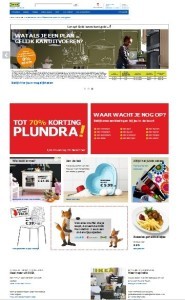Columnist Chandar Pattabhiram discusses the important of customer retention in an age where switching costs to consumers are low.

In my last post, I expanded on the concept of the “Engagement Economy,” today’s world where everything and everyone is connected. This world presents a new playing field for marketers trying to engage people within their organization, as well as partners and customers.
I frequently cite the statistic that only 13 percent of marketing leaders are working to retain and grow customer relationships through improved customer experiences. But in the Engagement Economy, keeping a customer becomes more important than acquiring them.
This is because the Engagement Economy is rife with business models where customer switching costs are low. Think of ride-sharing apps: Lyft and Uber must constantly compete for attention and brand affinity, as users can switch between them with virtually no headaches.
Although it’s on a larger scale, the same paradigm applies to the B2B world, where an organization can switch out Cloud-based applications with minimal long-term commitment.
So, what can you do? Smart brands must understand that in order to compete in the Engagement Economy, they must rethink their approach to engaging with their customers. This begins with getting rid of the phrase “retention marketing.” It’s a complete misnomer. Instead, think of retention as an outcome of smart marketing across the entire customer life cycle.
Getting to this outcome starts with acquisition — the kind of outreach that a majority of marketers are already comfortable with — but from there encompasses adoption, cross-sell and advocacy. Marketing leaders must allocate people and program dollars to each of these stages in order to execute them effectively.
Let’s take a closer look.

Adoption marketing
After a person buys a product or service, the marketer of that product or service can make two major missteps: either immediately try to market additional products or services to that person, or cease marketing to this person entirely. Either of these errors is a classic case of a brand forgetting that it needs to put the customer first.
The happy medium between these two extremes is the art of adoption marketing, i.e., continuing to market to customers in a way that ensures their success. As I remind my revenue team, we are not in the business of creating revenue; we are in the business of creating value! And this starts with each customer getting the most value out of what they have already purchased.
Marketing teams need to understand the current state of adoption for every major capability that a customer has purchased (usually done through technology) and then design a programmatic way — via direct communications, customer communities, education programs and more — to provide personalized tips, best practices and case studies regarding how to maximize their value. Not only is it a nice thing to do, it’s just smart business; the more your product becomes indispensable to someone, the less likely they are to replace you with the competition. And it costs far less to keep existing customers than it does to acquire new ones.
Without some form of adoption marketing, attempting to sell a customer anything else — be it another product or the renewal of a service — is a fruitless pursuit.
Cross-sell
Once a customer is fully yours (and happy), this is when you can begin to think about selling additional products or services. The beautiful thing here is that you can also be programmatic about how you approach cross-sell marketing, but it’s a matter of putting the manpower and funding behind it.
Cross-sell marketing shouldn’t be something you think of only when you have a new feature or product to announce. This is another subset of the customer journey and needs to be thought of with the same importance as the initial move from prospect to customer. Cross-sell is even more important in the Engagement Economy because the likelihood of retention increases when a customer has adopted multiple products.
At its core, the act of cross-selling is rooted in behavior marketing: you need to listen to what your customer does with a product or service, learn what else they need to do their job more effectively, and engage with them by offering them complementary products or services that will provide further value. A great example of this is Kaspersky Lab, a multi-billion dollar enterprise security software provider (and a Marketo customer). Kasperky created a Loyalty Behavior Score for each of their customers in order to understand the health of every customer at every stage of their life cycle based on their adoption. They then use this score to measure their cross-sell and upsell opportunities, engaging with the best customers at the best times to offer new products and services. The net result: increased cross-sell revenue and increased customer retention.
Advocacy
So you’ve gotten your customer to successfully adopt your product. Happy customers are the ones who are most likely to advocate on behalf of your brand.
There are two important criteria for determining the best advocates for brand:
- Never confuse customer loyalty with advocacy. We can be loyal to a brand without advocating for it, and this can be due to “locked in” loyalty through airlines, cable providers, software providers and so on.
- Never assume a strong correlation between the most lucrative customers and your best brand advocates. The brand advocate who goes “over the top” to showcase passion for the brand may not be making the big dollar investment, but nonetheless is providing huge value in other ways.
The average company has a very small pool of advocates to choose from. I think of it like the “1 Percent Rule” that applies to content consumption on the internet. In terms of brands with established or fast-growing customer bases, 90 percent of customers are lurkers, 9 percent of customers are likers, and 1 percent of customer are lovers.
Lurkers use a brand’s product or services — period. Organizations have little insight into how the lurkers truly feel about the product because their engagement with the brand is low. These are the customers who are most likely to drop your product for a different one. You’re also not going to get much value out of these customers because it will be difficult to sell them on new products or services.
Then there are the likers. This 9 percent generally enjoy using your product but do little to advocate on your behalf. Likers provide value to your brand in that they are a more reliable source of revenue, but they provide untapped potential in the ways in which they could be advocating for you.
The trick is to convert these likers into the final group, the “1 percent” of customers, which are the lovers. Lovers are your all-star brand advocates. Not only are they happy using your product, they’re ready to shout it from the rooftops and engage in advocacy activities, be they customer references, media opportunities, case studies or online reviews.
In an age where review sites like Yelp carry significant weight, having someone willing to sing your praises is invaluable to your business. If you can move even 1 percent of your likers over to the lover category, that’s a 100 percent advocacy increase!
Customers for life
In the Engagement Economy, keeping the customer for life is essential, but that means that you must engage with your customers at every step of their journey — and do it in the ways they most prefer. By approaching customer marketing in the right way, you have a chance to build lasting relationships and win the ongoing battle for the heart and mind of the customer.
Some opinions expressed in this article may be those of a guest author and not necessarily Marketing Land. Staff authors are listed here.
Marketing Land – Internet Marketing News, Strategies & Tips
(93)



